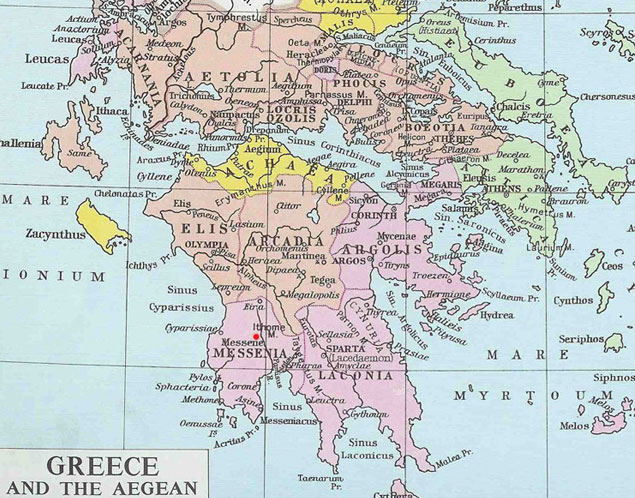A fortress of Messenia, on a mountain of the same name. It was celebrated for the long and obstinate defence (ten years) which the Messenians there made in their last revolt against the Spartans.The mountain was said to have derived its name from Ithomé, one of the nymphs that nourished Zeus. On the summit was the altar of Zeus Ithometes, to whom the mountain was especially dedicated. Strabo compares the Messenian Acropolis to the Acrocorinthus, being situated, like that citadel, on a lofty and steep mountain, enclosed by fortified lines which connected it with the town. Hence these were justly deemed the two strongest places in the Peloponnesus.
When Philip, the son of Demetrius, was planning the conquest of the peninsula with Demetrius of Pharos, the latter advised him to seize first the horns of the heifer, which would secure to him possession of the animal. By these enigmatical expressions he designated the Peloponnesus and the two strongholds above mentioned (Polyb. vii. 11). Remains of the ancient fortress still exist, the towers being magnificent specimens of military architecture and engineering. (Harpers Dictionary of Classical Antiquities, 1898)
